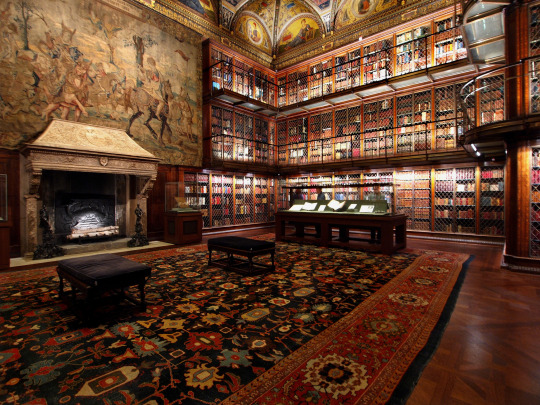Don't wanna be here? Send us removal request.
Text
Gamification
The term “gamification” was not one I was familiar with prior to this lecture and assignment. My initial thought was that it was the process of taking a print publication and somehow turning it into a game. What I discovered was far more interesting and far reaching, in that most tasks that we undertake can have the element of gaming introduced when a points or reward system is implemented.
Once I grasped the concept, I could see that gamification has been present in libraries, schools, and homes for many years. Reading contests held by school and libraries use the idea of accumulating points, represented by stickers or tokens, to reach a prize level (candy or bookmarks) to encourage further reading. In homes, chore charts are a way to reward family members for completing household tasks and marking them off- perhaps with a larger goal of a toy once the chart is filled.
I have been using a program called Duolingo to learn another language, and I can now see how gamification is present in this application. The app. tracks various aspects of usage, such as consecutive days used, in lesson grading, levels of language lessons finished, and assigns badges to them. It is a fun and interactive way to learn, and it is motivating to have achievements tracked. The idea of using gamification in a career setting is intriguing to me. I think there are many qualifications people have, that are difficult to quantify in a standard resume format. Badges could be a way to track accomplishments and present them to prospective employers in a standardized format. I would be interested in testing such a application, as it is being developed.
1 note
·
View note
Text
Social Networking
Social networking has become a part of everyday life for many. From scrolling through Facebook and Twitter, to commenting on Buzzfeed articles, many of us use some form of social media to reach out to the world around us.
Social media can connect people with similar interests, from around the world, who would not have the opportunity to interact without the presence of social media. It serves as a meeting place for people who share hobbies, and it can be an amazing source of support for people facing difficulties in their lives – whether it is illness or conflict at home.
I use Facebook to connect with family that live at a great distance. We are able to share pictures, stories, and more in real time. I also used Facebook as a school resource, to conduct interviews for my Genre Reader’s Advisory course in the Fall semester. I spoke to family and friends about their love of reading - from Germany, Ireland, the US and across Canada.
Social media can be a wonderful tool to enhance our online experience, or it can become a time sink that swallows hours of your day!
0 notes
Text
Augmented Reality
I read a number of articles and blog posts for this assignment, and what I found was that a great deal of the information was over my head. Many of the articles I read seemed to require background knowledge of the technical terms used to fully understand the subject under discussion. I was beginning to feel this might be a fringe technology, still in development, and not used commonly by the general population.
The article that gave me the clearest idea of what augmented reality can do in “real world” application was this one from UCLA Newsroom. The Augmented Reality Sandbox is a wonderful example of how augmented reality can be used as a teaching tool. (Personal aside; this looks incredibly soothing) The mobility of the system allows it to be set up in any classroom, making it available to more classes.
The above example reminded me of the interactive floor projections on display at the Royal Ontario Museum, similar to this one, that my children and I have thoroughly enjoyed. This led me to search the ROM website to find further examples of augmented reality in use. What I found was the dinosaur exhibit highlighted in Module 7, and this helped demystify the technology even further for me.
As a teaching tool, augmented reality can add significant interactivity to lessons, allowing students to experiment and learn through discovery. When used in conjunction with tablets or smart phones, the technology becomes far more accessible than when specialized equipment is required; ie headsets or glasses. I am eager to see how the technology will develop in the future, and how it will be incorporated into our lives.
0 notes
Photo


Rilla before and after photo editing
0 notes
Text
Assignment 3 INFOLT402
In the article “Blogs Wane as the Young Drift to Sites Like Twitter” the author, Verne G. Kopytoff, asserts that creating blogs on traditional blogging websites is of less interest to younger generations of Internet users than social networking sites such as Facebook and Twitter. Using statistical data and anecdotal evidence to support his statement, Kopytoff poses that the rise of these mircoblogging and social networking websites allow younger users to connect with friends and family in a more direct fashion, making the use of blogging sites unnecessary.
The tone of the article is at first neutral, but soon diverges from the position of unbiased reporting to a dismissive and critical view of social networking and its young users. Social networking sites are portrayed as somewhere to “complain about the weather” or “to tell people one is going to the grocery store," whereas real blogs are where serious discussion, by serious bloggers, takes place. Although Twitter limits entries to 140 characters, it can be defined as a microblogging website; where entries are posted in reverse chronological order, and can be of a personal nature. The author contradicts himself, after noting that blogging is evolving with the emergence of new technologies, such as Twitter, he then restates that younger generations are losing interest in blogging, and that it is the older generations who are increasing in number.
Overall the article did not give an accurate or unbiased view of the appeal of microblogging and social media websites to young Internet users. Supporting youth in their efforts to connect with the world would be better served by understanding what draws these users to favour these over others. These websites allow the users to connect with peers and the world in a way that is comfortable and appropriate to their interests. While the statistics support Kopytoff’s original view of declining blog usage by youth, the underlying assumption that these individuals are therefore not “real bloggers” is not supported by any factual evidence.
0 notes
Text
Bodleian Library wants you to color their collections!
The University of Oxford’s famous Bodleian Library has just released a free coloring book featuring images from their collection. You can download a PDF of the coloring book here.

Source of image
“An opportunity to join in with the current colouring trend and apply your colouring skills to images from our collections. We’ve provided a colouring book to get you started, but feel free to use our online resources to find your own. Don’t forget to share your final product on social media with the hashtag #ColorOurCollections! “

8K notes
·
View notes
Text
Welcome to my tumblr
Hello! This is my tumblr for INFOLT402. Please enjoy the various library and book related posts that I have found. :)
0 notes
Photo








Pierpont Morgan Library & Museum, NYC
37K notes
·
View notes
Text
The rare book library at Yale University has no windows..because the walls are made of translucent marble.





Source
522K notes
·
View notes
Quote
I don’t think the librarians there ever knew how much they helped me keep my sanity. I didn’t often ask for their help and was definitely a solitary library user, but I appreciate the library system and its staff for just being there when I needed it. I’m sure there are countless other stories from library patrons just like mine, people who have been helped by their libraries and never said anything. And though it’s a little late (about seven years late), this is my thank you.
from A Long Overdue Thank You to My Library (via bookriot)
360 notes
·
View notes





